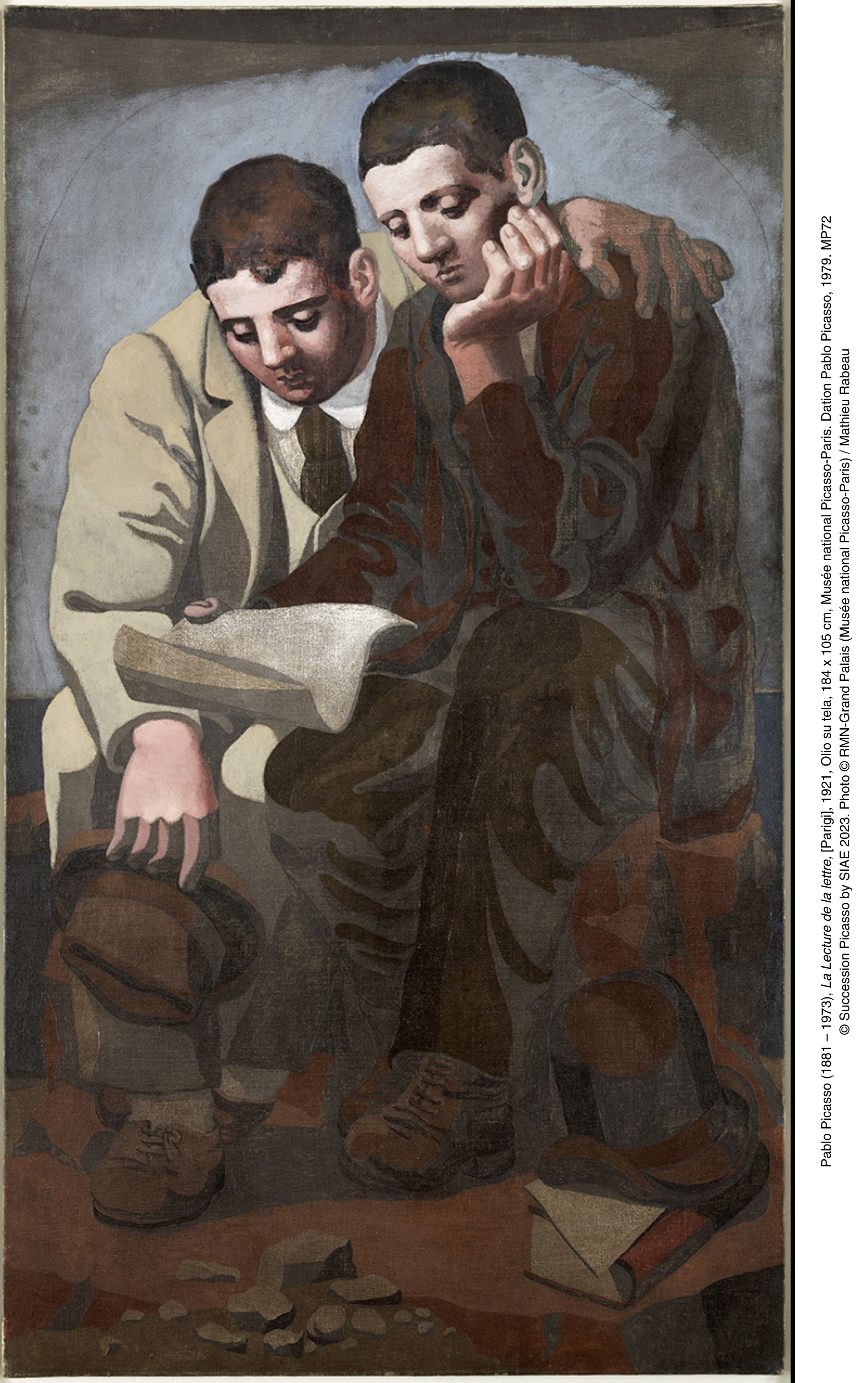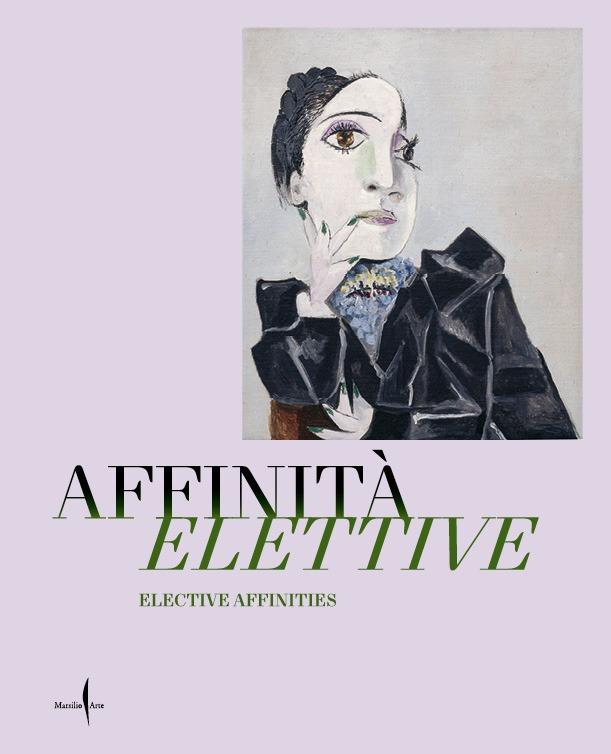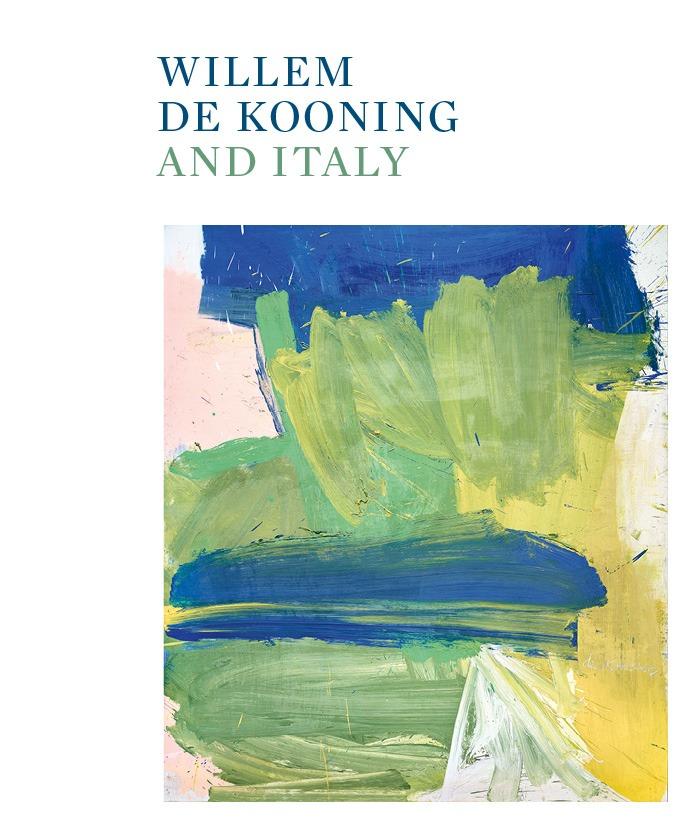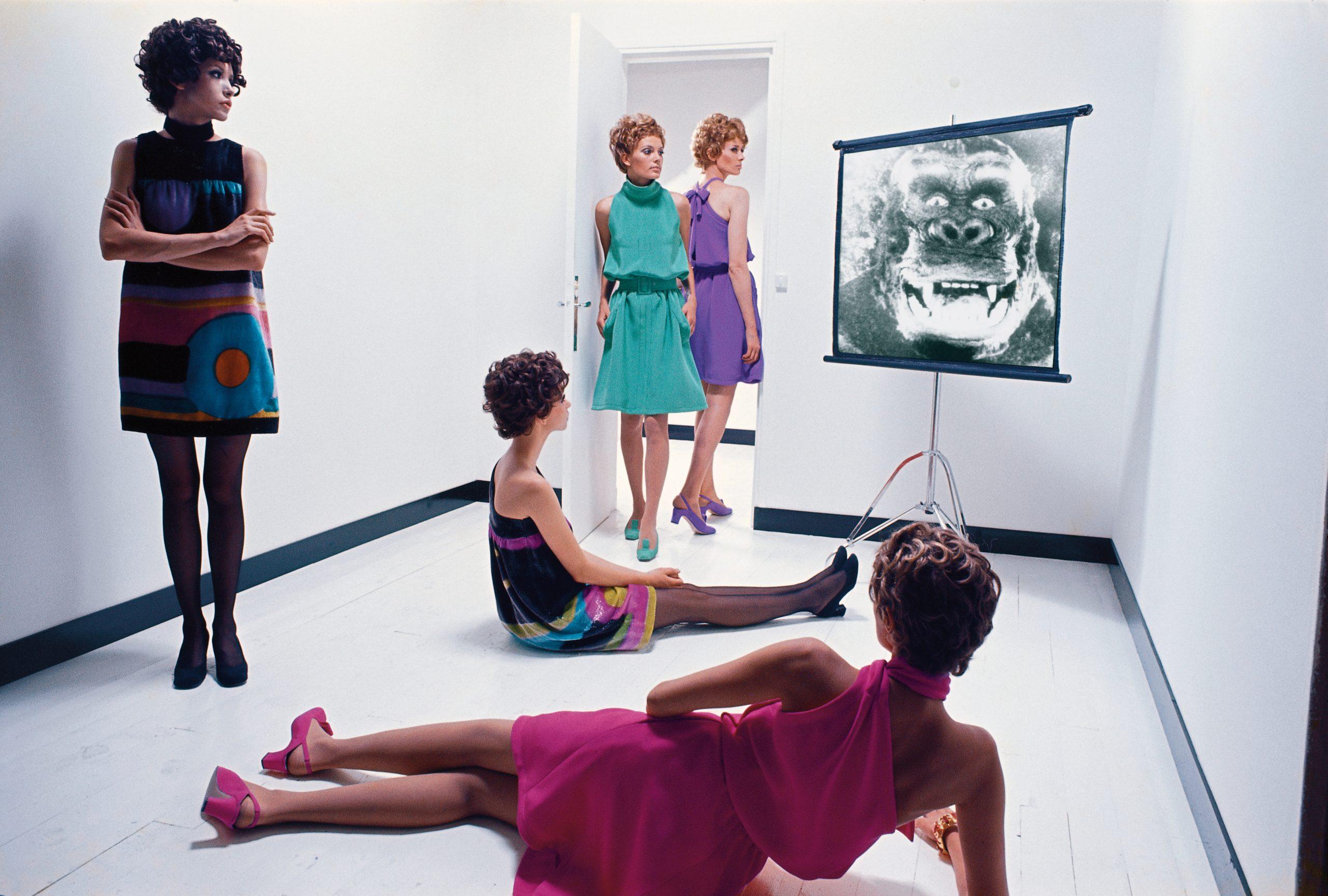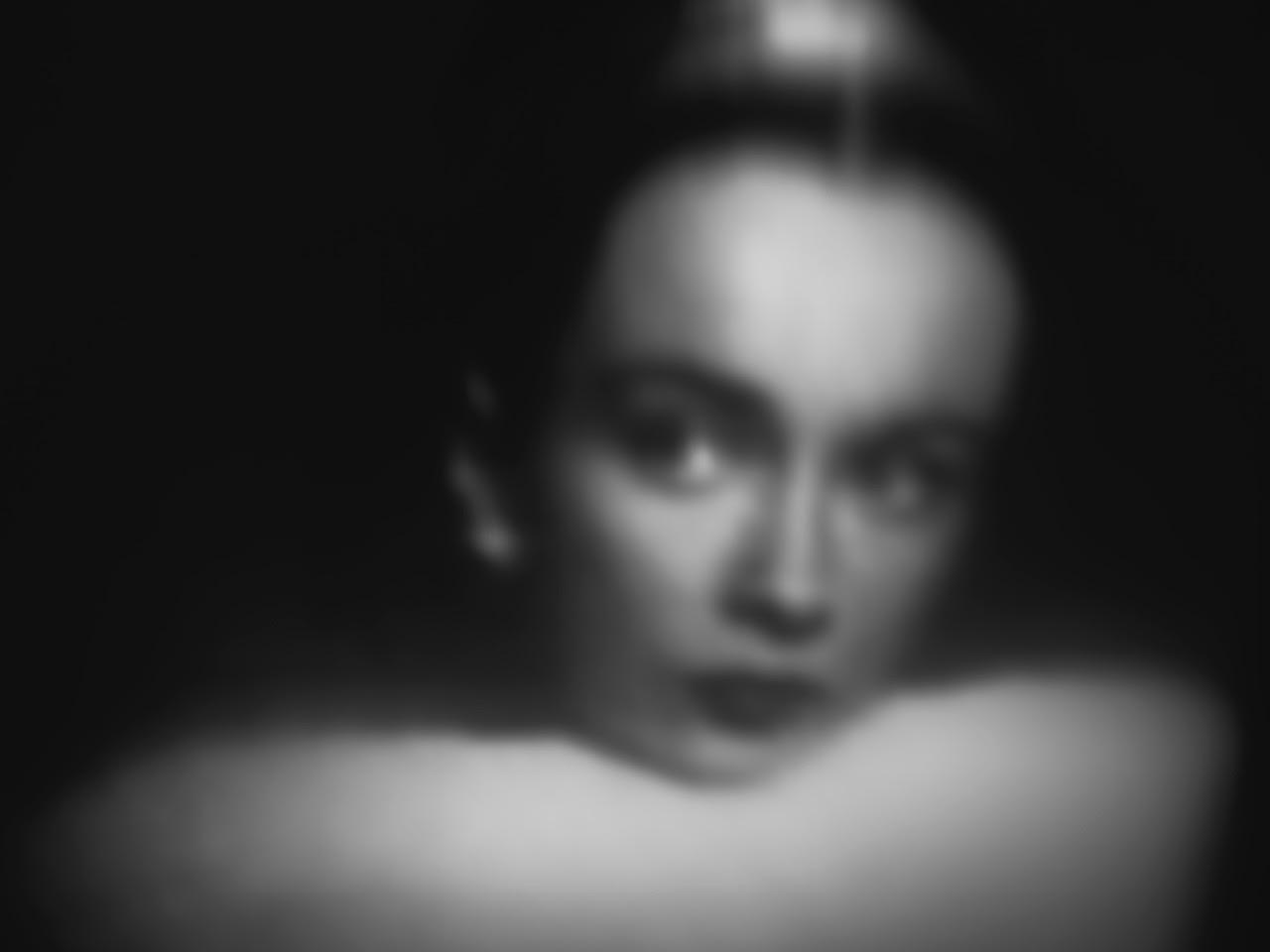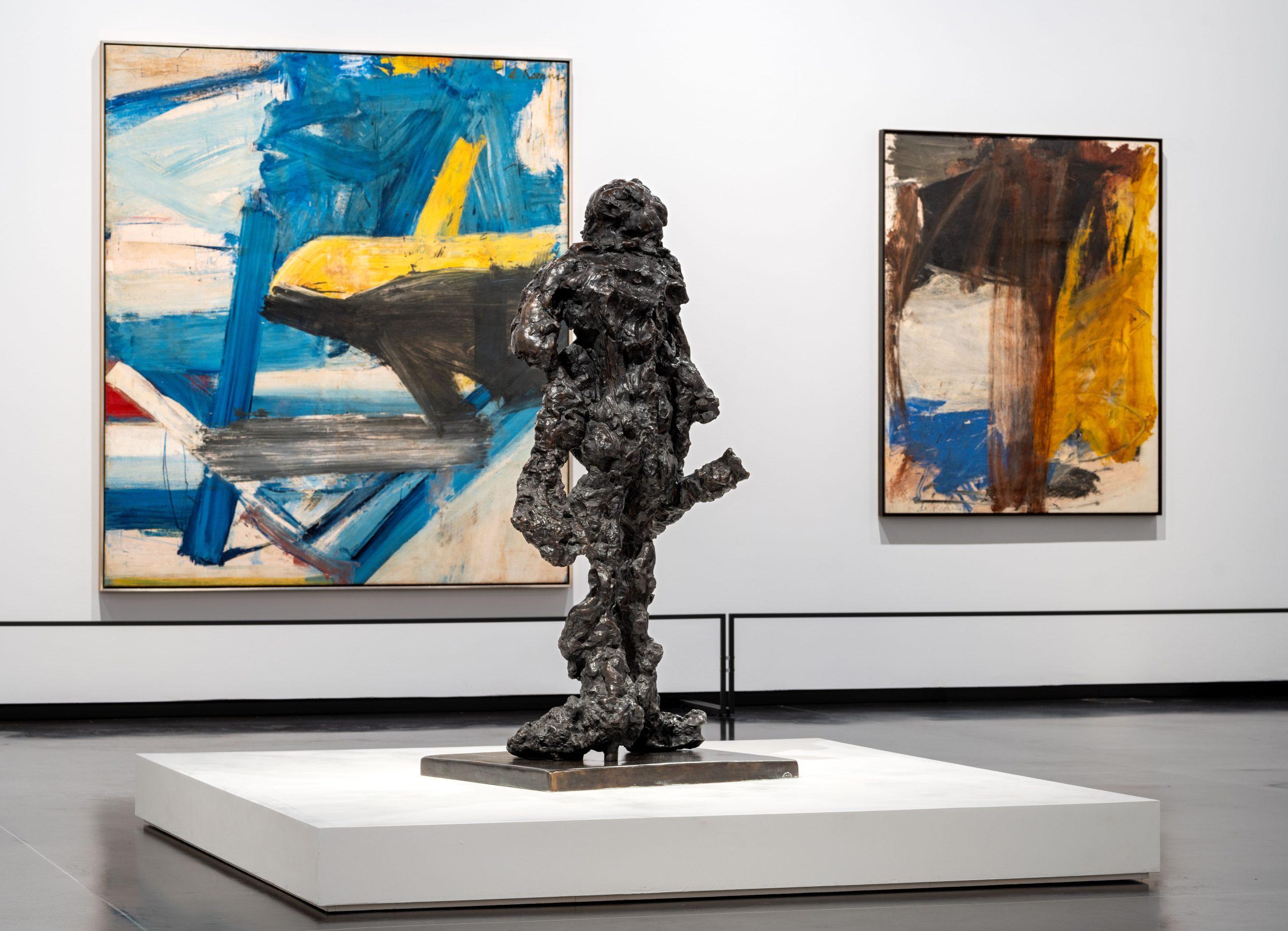Picasso the Foreigner presents more than 90 works of the artist, as well as documents, photographs, letters and videos, and offers a new and bold interpretation of the artist, which addresses urgent issues of our present.
Picasso has been written about everything, it seems. No other artist has aroused so many debates, controversies and passions. But how many people know what obstacles the young genius had to face when he first arrived in Paris, in 1900, without speaking a word of French? In 1901 he was registered as an anarchist under special supervision, before settling permanently in Paris in 1904, where he became the leader of the cubist avant-garde. During the civil war in Spain, the artist produced Guernica, the immense canvas destined to become the universal banner of the anti-fascist resistance. In 1940, fearing he was in danger in France, where the Nazi invasion was imminent, Picasso decided to apply for naturalization, which was refused.
But how did he manage to impose his aesthetic revolutions in a century marked by great political turbulence, in a world torn apart by nationalism of all kinds?
Picasso has been written about everything, it seems. No other artist has aroused so many debates, controversies and passions. But how many people know what obstacles the young genius had to face when he first arrived in Paris, in 1900, without speaking a word of French? In 1901 he was registered as an anarchist under special supervision, before settling permanently in Paris in 1904, where he became the leader of the cubist avant-garde. During the civil war in Spain, the artist produced Guernica, the immense canvas destined to become the universal banner of the anti-fascist resistance. In 1940, fearing he was in danger in France, where the Nazi invasion was imminent, Picasso decided to apply for naturalization, which was refused.
But how did he manage to impose his aesthetic revolutions in a century marked by great political turbulence, in a world torn apart by nationalism of all kinds?
The Exhibition
The year begins with the exhibition Picasso the Foreigner, promoted by the City of Milan and produced by Palazzo Reale with Marsilio Arte. The exhibition will be realised thanks to the generous collaboration of the National Picasso Museum in Paris (MNPP), the main lender. The original idea for the project came from Annie Cohen-Solal, scientific curator of the exhibition with the special curatorship of Cécile Debray, president of the MNPP, and the collaboration of Sébastien Delot, director of the MNPP’s collections. The exhibition will be set up in the rooms of the Palais Royal and open to the public from 20 September 2024 to 2 February 2025.Picasso the Foreignerpresents more than 80 works by the artist, as well as documents, photographs, letters and videos, and opens up more reflections on the themes of welcome, immigration and the relationship with the other. Pablo Picasso, born in 1881 in Malaga, Spain, settled in Paris in 1904. Although France became his home and his fame grew beyond national borders, the artist never obtained French citizenship. Thanks to a multidisciplinary approach and extraordinary research in the archives of the French police, Annie Cohen-Solal, author of the first biography of Jean Paul Sartre and a student of Leo Castelli, brought to light papers that until now had been lying on shelves for decades.
«I found documents, prints and photographs that show how the police considered Picasso an alien and an outcast», explains Annie Cohen-Solal, originally from Algiers and currently a professor at Bocconi University in Milan. «Throughout his life he was kept under surveillance for three reasons: he did not speak French and was treated as a foreigner; he was suspected of being an anarchist because he had hung out with some Catalans; and finally, as an avant-garde artist, he was rejected by the Academy of Fine Arts.»
Even when he was consecrated as one of the greatest living artists of his time, Pablo Picasso was not considered a true French citizen. The exhibition explores how the condition of being a foreigner influenced and formed his identity and, in turn, forces a reflection on contemporaneity.
«In my work, it constantly emerges how Picasso suffered this state of vulnerability and precariousness because he knew he could be deported at any moment. However, precisely because of this, while France continued to barely recognise him, he managed to protect himself by creating a network of powerful friends, collectors, collaborators and buyers throughout Eastern Europe who helped him to exhibit in the most prestigious places.»
Annie Cohen-Solal
No one had investigated this aspect of the life of the artist, author of the famous Guernica of 1937. Together with Cécile Debray, President of the MNPP, and Sébastien Delot, Director of Collections and Communication at the MNPP, the three curators will create a compelling journey through the life of Pablo Picasso. Ceramics, drawings, collages, prints, photographs, videos and documents will give visitors an insight into Picasso’s world, his life, his success and his relationship with women, the subject of critical research by the curators. 2024 holds yet more surprises in store.


Discover the exhibition journey
Picasso, the young Spanish painter, arrives in Paris for the 1900 Universal Exposition, where one of his works is presented. As revealed by his landscapes of Malaga, La Coruña, Madrid, and Barcelona, where he lived, he is immersed in plural Spanish cultures –Andalusian, Galician, Castilian and Catalan. For him, the French capital seems an opaque labyrinth of which he knows neither the language nor the codes.
By dint of perseverance, at the end of four successive trips in four years, and supported by Catalan friends, he finally finds his way into the metropolis that fascinates him. There he builds a network of friends as marginal as he. His work depicts the underworld of Paris : disoriented blind men, isolated and downtrodden women, lost absinthe drinkers, hatted prostitutes, before fixating on the circus world and a cohort of sad, tired, melancholic, and pale travelers.
By dint of perseverance, at the end of four successive trips in four years, and supported by Catalan friends, he finally finds his way into the metropolis that fascinates him. There he builds a network of friends as marginal as he. His work depicts the underworld of Paris : disoriented blind men, isolated and downtrodden women, lost absinthe drinkers, hatted prostitutes, before fixating on the circus world and a cohort of sad, tired, melancholic, and pale travelers.
Picasso continues to build his network : he joins expatriate circles, that of Leo and Gertrude Stein, then Wilhelm Uhde and Daniel-Henry Kahnweiler after 1907. In his small gallery on the rue Vignon, Kahnweiler develops a very elaborate sales method; he finds a public for Cubism in the monarchies of Eastern Europe as well as in the United States. Artists, critics, and collectors (mostly foreign) flock to Picasso’s studio, trying to understand this new aesthetic that questions traditional figurative representation.
In December 1912, at the National Assembly, some deputies attack cubist “garbage.” The critic Louis Vauxcelles deplores, that for him, “there are a few too many Germans and Spaniards in the Fauve and Cubist affairs […] and that the merchant Kahnweiler is not precisely a compatriot of [Van Gogh’s French gallerist] Father Tanguy.”
In December 1912, at the National Assembly, some deputies attack cubist “garbage.” The critic Louis Vauxcelles deplores, that for him, “there are a few too many Germans and Spaniards in the Fauve and Cubist affairs […] and that the merchant Kahnweiler is not precisely a compatriot of [Van Gogh’s French gallerist] Father Tanguy.”
How to understand Picasso’s aesthetic evolution during the interwar period? Plural, elusive, multiple, contradictory, his art disconcerts more than one critic. He appears successively as neo-cubist, classical, surrealist, figurative, and political.
Picasso’s precariousness as a foreigner in a period marked by waves of xenophobia forces him to find other circles of relations, after having lost friends, dealers, and collectors in the disasters of the First World War. With the Ballets Russes, the French aristocracy, the new surrealist generation, and the Spanish Republicans, he undesrtakes a strategic decentering. Across the Atlantic, he is drawn towards new hubs that celebrate him, such as New York’s MoMA, directed by Alfred H. Barr, Jr. From then on, so many territories, so many alliances that underlie the profusion of the Picassian œuvre.
Picasso’s precariousness as a foreigner in a period marked by waves of xenophobia forces him to find other circles of relations, after having lost friends, dealers, and collectors in the disasters of the First World War. With the Ballets Russes, the French aristocracy, the new surrealist generation, and the Spanish Republicans, he undesrtakes a strategic decentering. Across the Atlantic, he is drawn towards new hubs that celebrate him, such as New York’s MoMA, directed by Alfred H. Barr, Jr. From then on, so many territories, so many alliances that underlie the profusion of the Picassian œuvre.
During the Phony War, from September 2, 1939 to August 24, 1940, accompanied by Sabartés, Picasso withdraws to Royan. “Dear Sir, Please come to my office as soon as possible,” the local police commissioner notifies him on September 7, 1939. This warning shot addressed to him, and to all foreigners, announces the imminent danger: he is closely monitored and cannot travel without a safe-conduct pass. From now on, Guernica, the banner of resistance to all fascisms that circulates since 1937 in museums of the Western World, puts him at risk.
Between Royan and Paris, he tries to work, despite the seriousness of the personal threats he receives as a Spanish republican, as a “degenerate artist” according to the Munich Exposition of 1937, and as foreigner in a country soon to be occupied by the Nazis. In this threatening moment, on April 3, 1940, Picasso applies for French naturalization.
Between Royan and Paris, he tries to work, despite the seriousness of the personal threats he receives as a Spanish republican, as a “degenerate artist” according to the Munich Exposition of 1937, and as foreigner in a country soon to be occupied by the Nazis. In this threatening moment, on April 3, 1940, Picasso applies for French naturalization.
After the war, Picasso starts building his myth. In 1948, following his generous donation of ten paintings to French public collections, the Paris Prefect grants him the status of “privileged resident,” a title renewable every ten years. One by one, French museums begin to celebrate him: the Museum of Fine Arts of Lyon (1954); the Museum of the Decorative arts of Paris (1955); and the Grand Palais, the Petit Palais and the National Library of France that jointly organize a sumptuous “Tribute to Picasso” in 1966. But in 1955, Picasso left Paris for the South of France, never to return. Living in Antibes, Golfe- Juan, Cannes, Vauvenargues, and Mougins, in a very centralized country, Picasso once again decides to go against the current, choosing the South against the North, the craftsmen against the Beaux-Arts, the region against the capital.
Explore the Exhibition
Plan your visit
Opening Times
Tuesday – Sunday 10-19.30.
Thursday’s closing time at 22.30.
Last admission one hour before closing time.
Closed on Mondays
Location
Palazzo Reale – 1st Floor
P.za del Duomo, 12 MILANO (MI)
ITALIA
Tickets
Open: € 17,00
Open: € 17,00
Full price: € 15,00
Reduced price: € 13,00
Visitors from 6 to 26 years, visitors over 65 years, TCI and FAI members with card, Ticket holders participating in the initiative “Monday Museums” (Poldi Pezzoli/ Museo Teatrale Alla Scala), Military and Law Enforcement not in service, Teachers and other categories affiliated, employees and BPER customers (only for purchase at the ticket office of Palazzo Reale maximum 2 reduced badges).
Reduced price: € 10,00
Students up to 25 years, Musei Lombardia card members and Orticola members with card valid for the current year, disabled with disability of less than 100%. ATM annual subscriptions and ATM employees.2×1: Employees Unipol Group purchase of two entrances at the price of one to 15 euros.
Picasso Milan – Mantua €15,00
The Picasso exhibition at Palazzo Te. Poetry and Salvation, edited by Annie Cohen-Solal, is presented as the main production of the cultural program 2024 dedicated to the theme of the Metamorphosis, and in particular the relationship between Giulio Romano and the poem of Ovid that inspired the construction of Palazzo Te from 1525 to 1535.
Set up at Palazzo Te from 5 September 2024 to 6 January 2025, produced by the Palazzo Te Foundation with the collaboration of the Picasso National Museum in Paris and the artist’s family, the exhibition presents to the public about 50 works by the Master symbol of the twentieth century, including some paintings for the first time exhibited in Italy.
Special discount: € 6
Employees City of Milan (after showing the badge – only one possible guest in tow is entitled to the Reduced 13.00 €), volunteers of the Civil Service operating at the City of Milan (after showing the identification card), groups organized directly by the FAI and groups organized directly by the TCI Touring Club, unaccredited journalists with an odg card with the current year stamp.
Free admission
Disabled people with a disability of 100%, children under 6 years, qualified tour guides with identification card, one companion for each group, two escorts for each school group, a companion for disabled people who are in need, a guide and a guide for each Touring Club and FAI group, journalists accredited by the Press Office of the City and the Exhibition, employees of the Superintendence of Landscape and Architectural Heritage of Milan, ICOM members, employees of the Exhibition Area and Scientific Museums of the Royal Palace (subject to the presentation of a name card), members of the Supervisory Committee and fire brigade (after showing a non-nominative card), holders of a coupon.
Audio guides of the exhibition are included in all tickets and are available through QR code along the exposition. You can also listen to them here!
NOTICE TO VISITORS
We inform our visitors that Friday, December 13th 2024, all day long, due to a national general strike, the regular opening of the exhibitions may not be guaranteed, the exhibitions will close at 5:30 PM (last entrance 4:30 PM).
We apologize for the inconvenience.
Guided tours
Ad Artem offers two different ways to visit the exhibition, giving you the opportunity to choose between guided tours and visits with laboratory activities.
With the eyes of others
visit workshop families with children 6-10 years
In Paris, living the condition of a foreigner, Picasso has built a multifaceted artistic identity taking inspiration from cultures that are very far from his own. Let’s discover together these sources of inspiration and how the artist was able to translate them into a personal language with which he has succeeded in imposing himself like few others in the history of art. In the laboratory, by interacting the views of the members of the group, we play with the ideas of uniqueness and multiplicity. We work from the same subject elaborated individually, then we dismantle it and recompose it with elements coming from the creations of the companions thus obtaining a new subject in which we meet our vision and the “looks” of others.
Picasso: the stranger’s journey
guided tour for adults and families with teenagers
Is France in the early 20th century really a welcoming haven for artists from other countries who gather under the banner of the Paris School? The young Picasso – who arrived in France in 1900 – is actually an artist marginalized as a foreigner, who will face any difficulty thanks to the strength of his art. The guided tour illustrates in depth all the production of the most revolutionary artist of the twentieth century, through a path full of multidisciplinary ideas that accompanies the visitor to the discovery of paintings, drawings, sculptures, collages, photographs.
COSTS
guided tours individuals and families with teenagers € 10,00 €10.00 per person (75 minutes) + admission ticket
laboratory visit for families € 10,00 per person (90 minutes) + admission ticket
info and bookings Ad Artem info@adartem.it 02 6597728
Educational
The exhibition is not only an occasion to approach the artistic journey of the greatest artist of the twentieth century, but also a unique opportunity to put yourself in the shoes of a young stranger who leaves his homeland and faces his path of growth in a reality that for language, culture, way of life differs from its origins and in which it struggles to be welcomed.The unprecedented narration of the exhibition, thanks to the cut given to the scientific project by the curator Annie Cohen-Solal, brings out themes of great relevance in the field of civic education, such as inclusion, respect for diversity, hospitality, both for young people and for adult visitors. The presence of extraordinary works, documenting the entire production of Picasso, creates an almost infinite possibility of connections between painting, sculpture, literature, history, philosophy, in a multidisciplinary approach that has always characterized the educational projects of Ad Artem.
Two different modes are proposed: guided tours (75 minutes) and laboratory visits (120 minutes).
With the eyes of others
primary school workshop visit
Artistic path dedicated to civic education
In Paris, living the condition of a foreigner, Picasso has built a multifaceted artistic identity taking inspiration from cultures that are very far from his own. Let’s discover together these sources of inspiration and how the artist was able to translate them into a personal language with which he has succeeded in imposing himself like few others in the history of art. In the laboratory, by interacting the views of the members of the group, we play with the ideas of uniqueness and multiplicity. We start from the same subject elaborated individually, then we dismantle it and recompose it with elements coming from the creations of the companions thus obtaining a new subject in which we meet our vision and the “looks” of others.
Beyond words
Examination of the secondary school laboratory of the first grade and second year of secondary school II grade
Artistic path dedicated to civic education
When 19-year-old Picasso arrives in Paris he does not find a favorable environment and the first major obstacle is a language he does not know at all. Art is the language with which he is able to make himself known and build the network of relationships that will welcome and support him. The cut of the exhibition allows us to discover the work of the Spanish artist and to approach his personal experience while facing current themes such as inclusion, respect and understanding of the different, communication. In the laboratory, in small groups, we try to translate some of the issues that emerged between the works in an expressive form chosen from those experienced by Picasso. So it will be colors, materials, gestures… the means by which to try to be understood by others, without words.
Picasso: in search of identity
Interactive Secondary School Guided Tour of I. and II
Guided tour dedicated to civic education
How does the Spanish Picasso live in the Paris of the early twentieth century? Does the young artist manage to integrate into a cosmopolitan city like the capital of art? The guided tour involves students in a story of the life and artistic activity of Picasso, who will face many obstacles to succeed in establishing himself in a world that looks at him with great distrust. The exhibition illustrates to the children the entire career of the father of cubism, with a focus on the themes of inclusion, integration, relationships and interpersonal communication. In this way the visit to the exhibition becomes a lesson in civic education of the highest artistic, cultural and social value.
Picasso: citizen of the world
Interactive Secondary School Guided Tour of I and II
In the light of recent studies on the archives of the Picasso Museum in Paris, the exhibition offers a new interpretation of the work of the Spanish artist. The guided tour starts from these premises to deal in depth with the artistic production of Picasso, with artworks showing students the early Parisian twentieth century, the study of primitive art, the birth of cubism, the return to the tradition of the past, the years of maturity. The multiform production of the Spanish master favors the multidisciplinary approach, in an engaging path that sheds light on issues never dealt with until now.
Picasso: the foreigner’s journeyguided tour groups of adults
Is France in the early 20th century really a welcoming haven for artists from other countries who gather under the banner of the Paris School? The young Picasso – who arrived in France in 1900 – is actually an artist marginalized as a foreigner, who will face any difficulty thanks to the strength of his art. The guided tour illustrates in depth all the production of the most revolutionary artist of the twentieth century, through a path full of multidisciplinary ideas that accompanies the visitor to the discovery of paintings, drawings, sculptures, collages, photographs.
COSTS
italian
guided tour for schools € 90,00 (75 minutes)
guided tours for groups € 120,00 (75 minutes)
laboratory visit for schools € 120,00 (120 minutes)
laboratory visit for groups/groups of families € 140,00 (120 minutes)
english
guided tour for schools € 110,00 (75 minutes)
guided tours for groups € 140,00 (75 minutes)
laboratory visit for schools € 140,00 (120 minutes)
laboratory visit for groups/groups of families € 160,00 (120 minutes)
info and bookings Ad Artem info@adartem.it 02 6597728
News and Events
Privat events
On the occasion of the exhibition, the organizers are pleased to offer companies the opportunity to use the prestigious spaces of Palazzo Reale for gala convivial events, such as dinners or cocktails, combined with an exclusive visit to the exhibition.
These events can take place on Mondays, Tuesdays, Wednesdays, Fridays, Saturdays, and Sundays starting at 8:00 PM. eventi.milano@marsilioarte.it


Press
Press Office Marsilio Arte
Mostra
GZComunicazione
Giulia Zanichelli /+39 347 4415077
giulia@giuliazanichelli.it
ufficiostampa@giuliazanichelli.it
Marsilio Arte
Giovanna Ambrosano: g.ambrosano@marsilioarte.it
Comune di Milano
Elena Conenna: elenamaria.conenna@comune.milano.it
Press kit
Click here for press kit
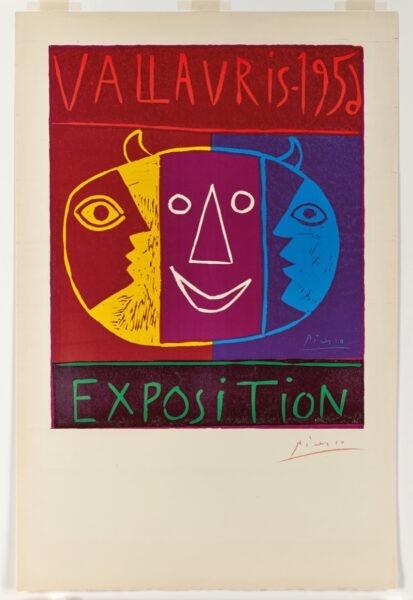
You might also be interested in








